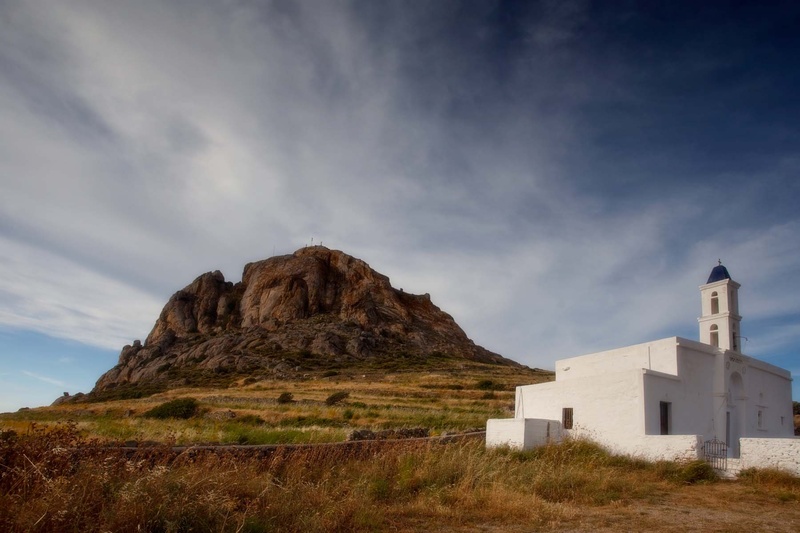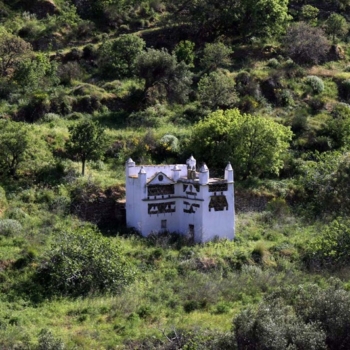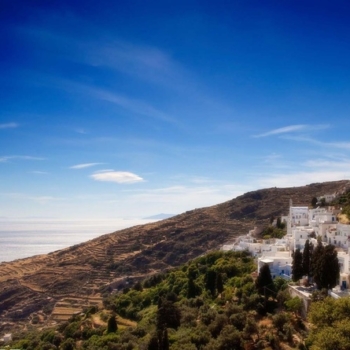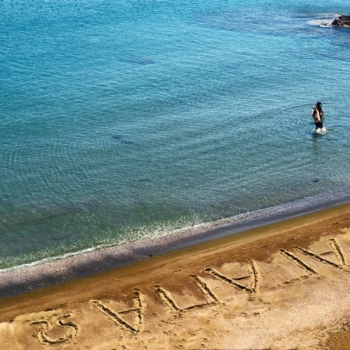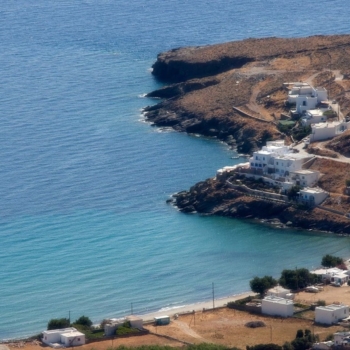The now deserted rock of Xombourgo dominates in the middle of the northern part of Tinos. By ascending up to its peak through the few ruins that have remained, you will enjoy a unique view of Tinos and the neighbouring islands. At this naturally fortified site, the Venetians built their castle, in which there were houses, shops, and churches. Outside the castle there was Mount Xobourgo (from the Italian word sobborgo, which means a suburb. The older fortification in Xombourgo, a Cyclopean masonry wall of which a small part in the north-western side of the hill remains, was built around the 12th century B.C. In the 6th century B.C., a larger wall was created. In Byzantine years when piracy flourished, Xombourgo was inhabited again. When in the year 1207 the Gyzi brothers occupied Tinos, they immediately started the fortification of the rock, by building an impregnable fortress, the castle of Agia Eleni, as they called it, after the church that existed on the peak of the hill. The Turks occupied the castle much later, in the year 1715, and they completely demolished it. The inhabitants of Xombourgo started to abandon the settlement and by the beginning of the 20th century, even the last inhabitants had left.
At the foot of the cliff two Orthodox country churches remain – Agios Minas and Eleousa –as well as the monastery of Ieri Kardia Isou, one of the most important Catholic pilgrimage sites in Greece. It was founded immediately after the occupation of the island by the Turks, by Jesuit monks. The original small church, devoted to Agia Sofia, was completely renovated in the year 1895 and it was honoured in the name of Ieri Kardia. The church is impressive, with a large statue of Christ in its interior and icons from the 17th century. In the courtyard you will see the monument with the statue of Christ, a work by the sculptor Ioannis Filippotis (1951).
